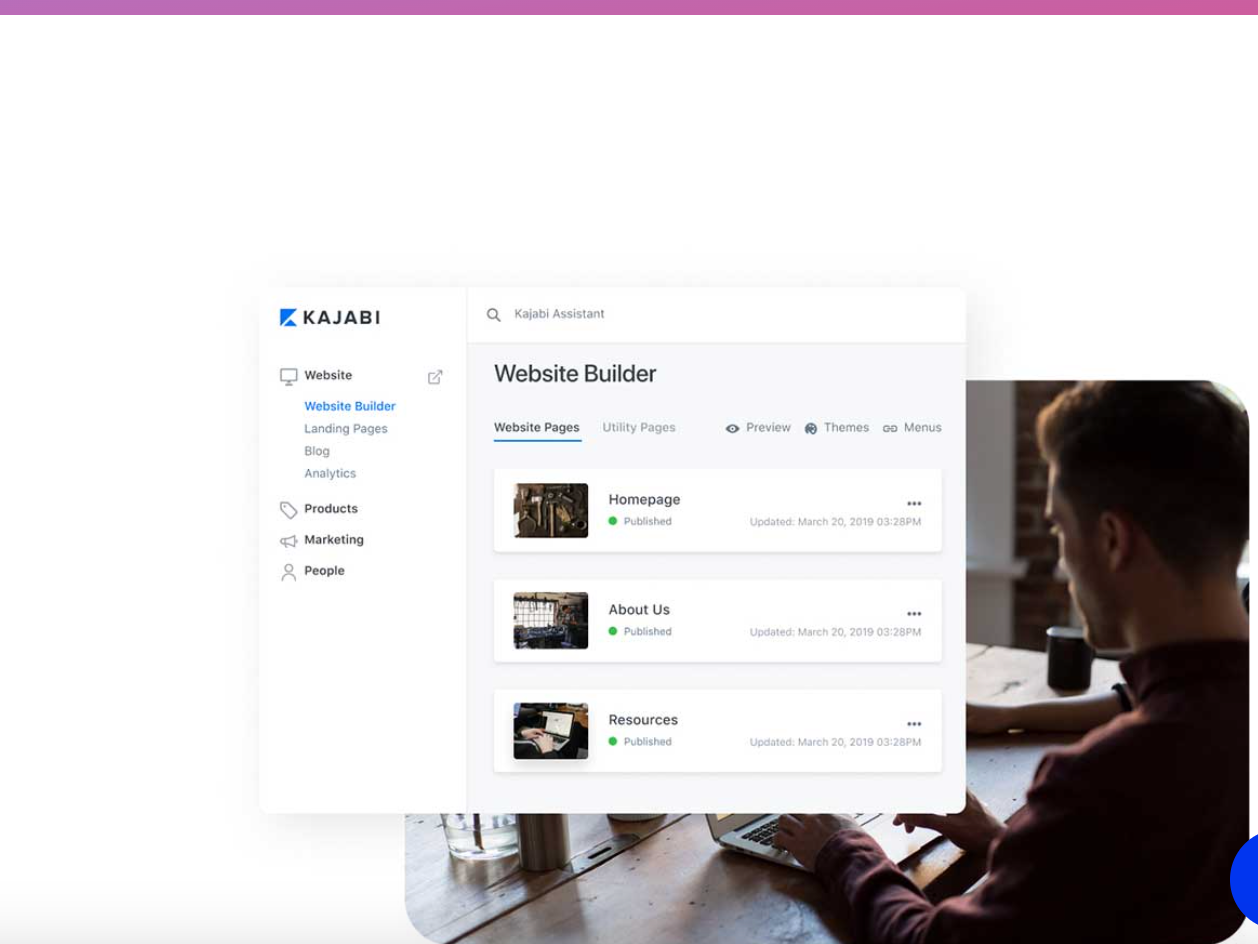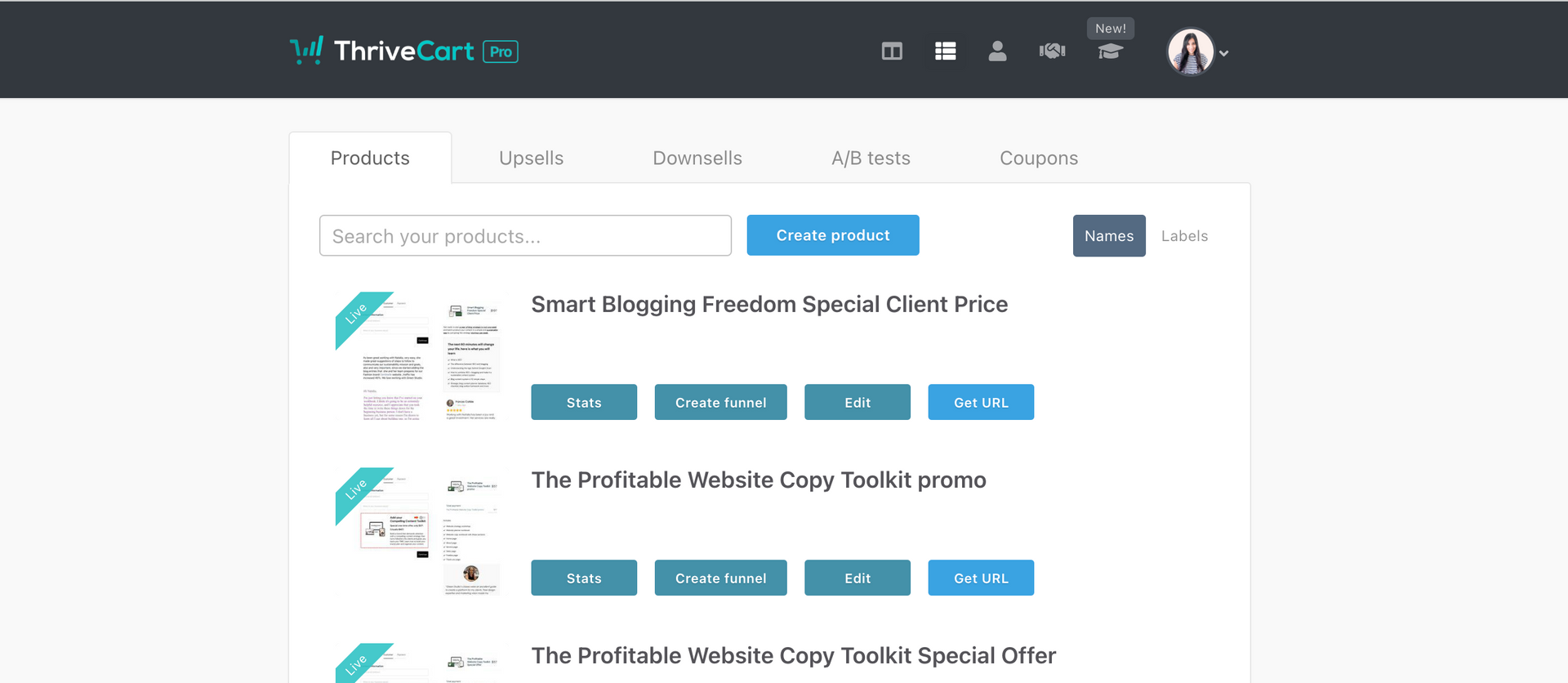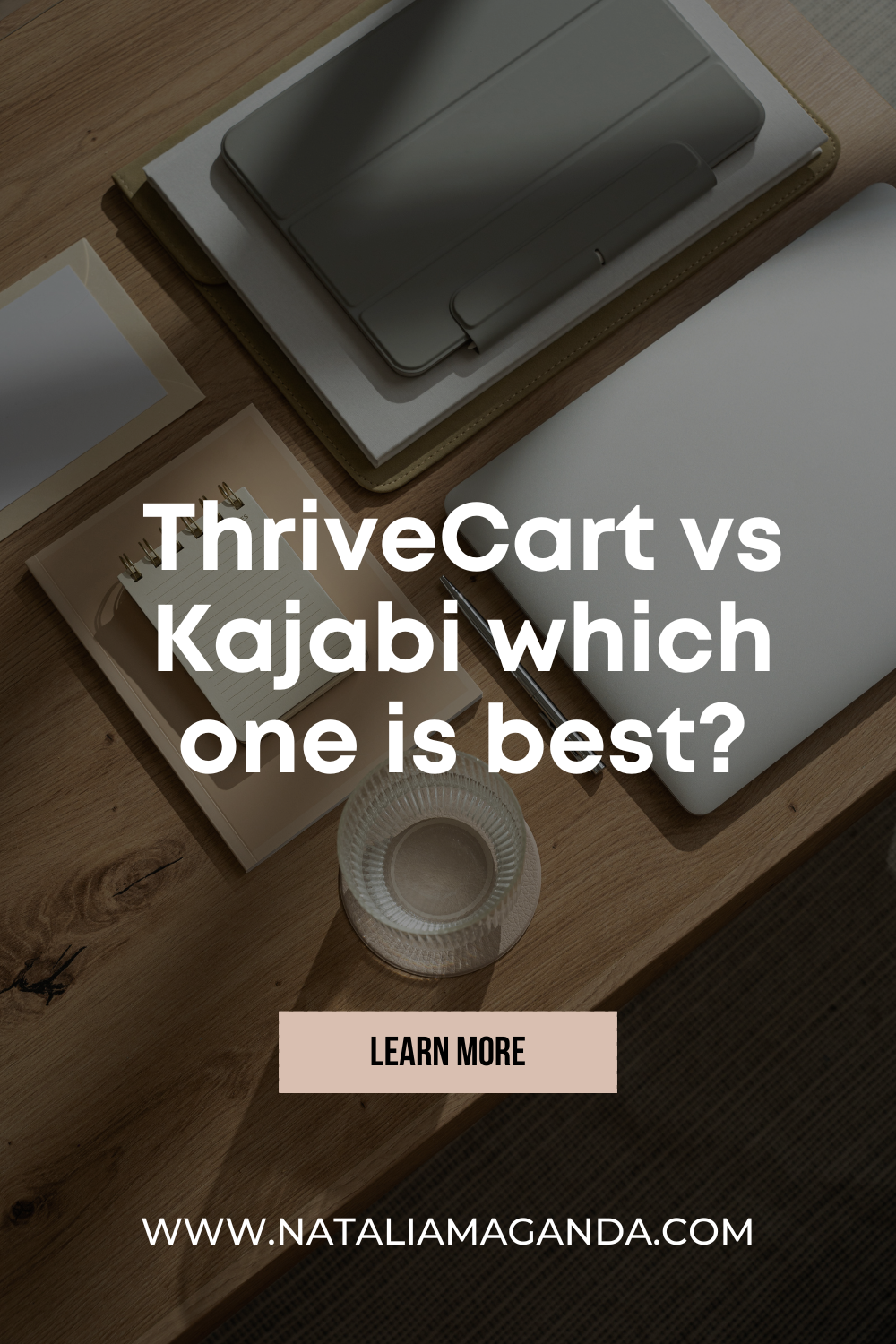ThriveCart vs Kajabi which platform is best for coaches
As a coach or course creator, picking the perfect platform for your business is very important. Today, I want to dive into: ThriveCart vs Kajabi. You may find yourself torn between an all-in-one solution or saving money with ThriveCart. But don’t worry! By the end of this blog post, you'll have a clear understanding of the pros and cons of both platforms, enabling you to make an informed decision that aligns with your goals and budget.
If we haven't had the pleasure of meeting yet, I'm Natalia Maganda and my mission is to help you stand out, gain visibility, and simplify your marketing efforts through beautiful web design. And let me tell you, when it comes to talking about tech and automations, it's my zone of genius! �55358;�56595;
What exactly is Kajabi?
Kajabi
is a comprehensive all-in-one platform designed specifically for coaches and course creators. It provides everything you need to create, market, and sell your online courses or coaching programs. With Kajabi, you can build a beautiful website, host your content, manage memberships, send automated emails, create sales funnels, and even conduct webinars. It's an all-encompassing solution that simplifies the process of launching your coaching business online.

What exactly is ThriveCart?
On the other hand,
ThriveCart
(affiliate link) is a powerful shopping cart platform that focuses on helping you sell your products effectively. While it may not have all the bells and whistles of Kajabi's all-in-one approach, it excels in its simplicity and customization options. ThriveCart allows you to create high-converting checkout pages, upsell offers, order bumps, and affiliate programs with ease. And with ThriveCart learn you can have your online courses here too. What I personally love about ThriveCart is that it is a one time purchase that ticks all the boxes in terms of what you need for a high-converting sales funnel, and in the long run it’ll save you thousands of dollars as your business grows.

The main differences between Kajabi and ThriveCart
Now that we have a basic understanding of what Kajabi and ThriveCart are, let's explore the key differences between the two platforms:
1. Website front-end strategy
Kajabi offers a wide range of customizable templates and themes to create visually stunning websites that reflect your brand. ThriveCart, on the other hand, focuses more on optimizing the sales process with its conversion-focused checkout pages. You will need to have your website on another platform and use ThriveCart for everything else.
2. Website back-end strategy
Kajabi provides a complete content management system, allowing you to host your courses, create landing pages, and manage memberships all in one place. ThriveCart was originally built as a shopping cart platform that has now evolved with ThriveCart Learn so that you can have your online courses here. Unfortunately, while ThriveCart Learn dows allow you to have your courses there, it doesn’t mean ThriveCart provides hosting for your courses, so you will need to have all digital files or videos on Vimeo, Loom, Google Drive and similar and link/embed all your content. I personally didn’t mind this because if I can save the cost of a monthly subscription like Kajabi and do a little bit of tech setup, this allows me to spend my marketing budget on other things.
3. Monthly and annual costs
Kajabi operates on a subscription-based pricing model, offering different plans based on your business needs. For latest pricing
check here.

ThriveCart, on the other hand, requires a
one-time purchase
with optional add-ons available for an additional cost.

4. Your level of tech savviness
Kajabi is designed to be user-friendly and accessible even for those with limited technical knowledge. ThriveCart may require a bit more technical know-how but provides extensive documentation and support to help you navigate the platform effectively.
5. The level of automations and integrations you want to have
Kajabi offers robust automation capabilities, allowing you to set up email sequences, drip content, and automate various aspects of your coaching business. ThriveCart integrates seamlessly with popular email marketing platforms and payment gateways, giving you flexibility in setting up your desired automations. Essentially, they both do what they need to do the only difference is that when you choose ThriveCart vs Kajabi, you actually have more control over the tech stack of tools to use, and for example connect to more advance software for email marketing or integrating with Zapier for advanced analytics and extracting data of all of your transactions.
Now that we've covered some key differences between Kajabi and ThriveCart, let's dive deeper into what factors you should consider when choosing between the two platforms.
ThriveCart vs Kajabi comparison chart
How much does Kajabi cost?
Kajabi offers three pricing tiers: Basic at $149 per month, Growth at $199 per month, and Pro at $399 per month. Each tier comes with different features and limitations, so it's important to choose the one that aligns with your business needs. For updated
pricing reference this page
How much does ThriveCart cost?
Unlike Kajabi's monthly subscription model,
ThriveCart
is available as a one-time purchase for $495. This means you can enjoy all the features without any recurring fees. It's a great option if you're looking to save money in the long run.
Which is better: ThriveCart or Kajabi?
The answer to this question depends on your unique needs and preferences. Both platforms offer distinct advantages and cater to different aspects of your coaching business.
If you prioritize simplicity and all in one platforms, Kajabi might be the better choice for you. On the other hand, if you value efficient checkout processes, and a one-time purchase option,
ThriveCart
could be the perfect fit.
Personal preference for ThriveCart: One-time purchase, customization, integrations, and automations
Personally, I prefer
ThriveCart
for several reasons. First and foremost, the one-time purchase option eliminates ongoing subscription costs, which can save you thousands of dollars in the long run.
Additionally, ThriveCart offers an impressive level of customization, allowing you to create a seamless brand experience for your customers.
Furthermore, ThriveCart integrates seamlessly with many other apps, making it easy to nurture leads and automate your marketing campaigns. The platform also provides powerful automation capabilities such as upsells and downsells to maximize your revenue potential.
Both ThriveCart and Kajabi offer unique features but the best options really depends on your unique needs
By understanding the differences between these platforms and considering your specific requirements, you can make an informed decision that best suits your coaching or course creator business.
If you sign up for ThriveCart today you can send me an email and get access to my
Profitable Website Copy Toolkit
for free to help you optimize your website copy and write strategic sales pages that convert.
Remember, choosing the right platform is a crucial step towards achieving your goals as a coach or course creator. So don't rush the decision-making process—weigh the pros and cons, consider your budget and technical expertise, and trust your intuition. Your dream clients are waiting for you, and with the right platform by your side, success is just around the corner!
Related reads:

* AI Disclosure: This content may contain sections generated with AI with the purpose of providing you with condensed helpful and relevant content, however all personal opinions are 100% human made as well as the blog post structure, outline and key takeaways.
* Affiliate Disclosure: Some of the links on www.nataliamaganda.com may contain affiliate links meaning that I will get a commission for recommending products at no extra cost to you.

hello! i'm natalia
Latina, web design expert for mental health professionals.
I help ambitious life coaches, therapists and holistic leaders amplify their magic, gain visibility, and simplify their marketing efforts through strategic web design and content.











